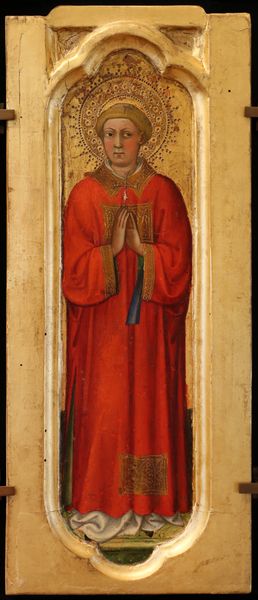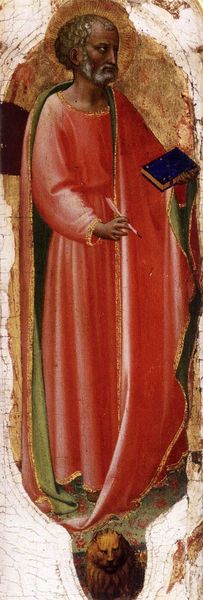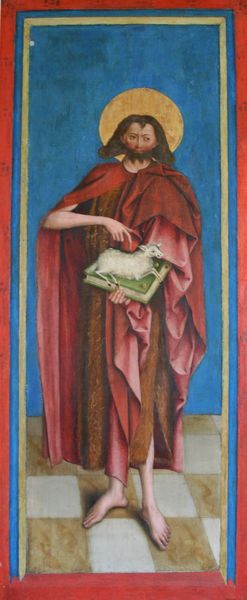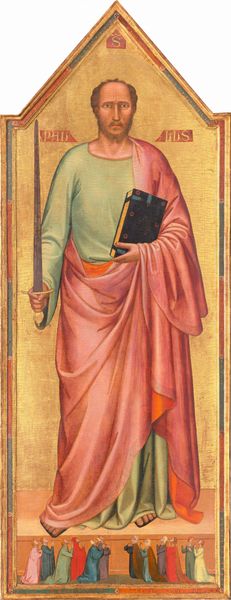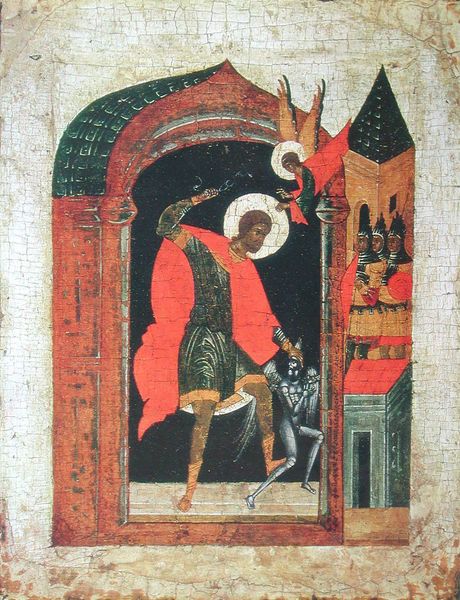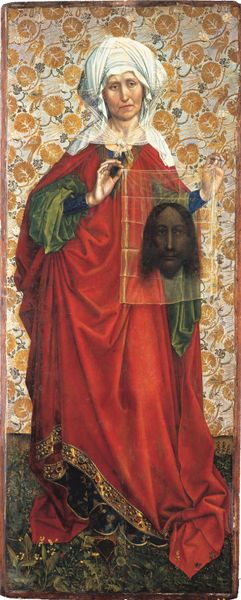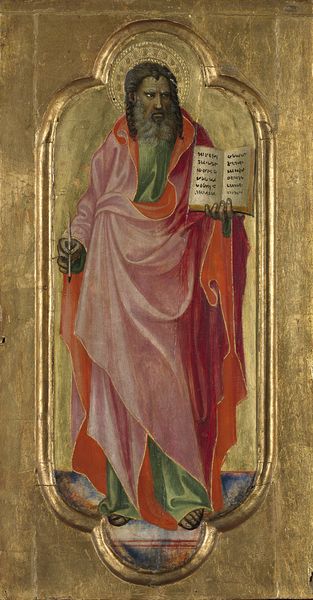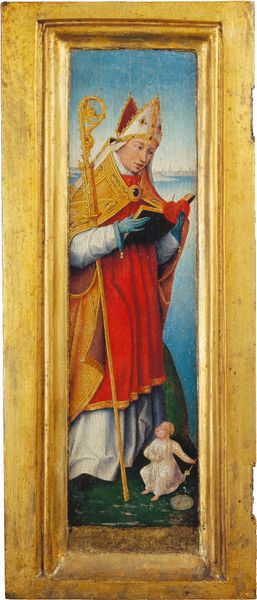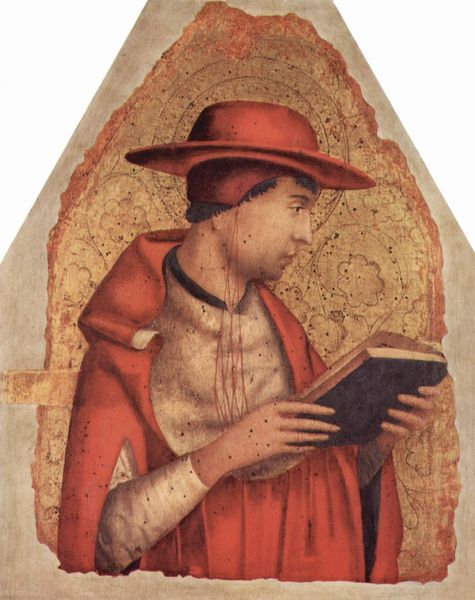
tempera, painting, oil-paint
#
portrait
#
tempera
#
painting
#
oil-paint
#
figuration
#
oil painting
#
history-painting
#
italian-renaissance
#
early-renaissance
Dimensions: 10 1/4 x 6 5/8 in. (26 x 16.8 cm)
Copyright: Public Domain
Editor: Here we have Antonio Vivarini's "Saint Jerome" from the 1440s, currently at the Met. The figure is so striking, almost severe, but surrounded by objects that hint at something grander. What can you tell us about how this image might have functioned in its time? Curator: This panel speaks volumes about the role of the Church and scholarship in shaping societal values during the Early Renaissance. Consider the setting – what looks like an idealised, miniature architecture, with a tiny chapel visible in the upper left. What does that signify to you? Editor: It feels like a sort of aspirational landscape. Was this about legitimizing religious authority? Curator: Precisely. Jerome's scholarly role – he famously translated the Bible – lent the Church immense intellectual weight. Also observe the prominent placement given to the lion – Jerome’s companion, the image is not there for aesthetic purposes but serves as symbol for religious themes. What’s fascinating is that images of religious figures often also were politically charged, offering ways to reinforce certain power structures. Editor: So it's not *just* a religious painting, but also makes a statement about how knowledge and religious power intersected back then? Curator: Exactly. And think about where such a panel might have been displayed, and to whom. The wealthy ruling class often were also religiously devout, and were the targeted audience. It powerfully demonstrates the visual language used to create authority in that period. Editor: That's so interesting. It reframes how I see the role of the artist, less as just creating something beautiful and more as participating in larger cultural dialogues about influence. Thanks! Curator: My pleasure. Thinking about how artworks circulate within a social and political world deepens our appreciation for what the art is really *doing*.
Comments
No comments
Be the first to comment and join the conversation on the ultimate creative platform.

